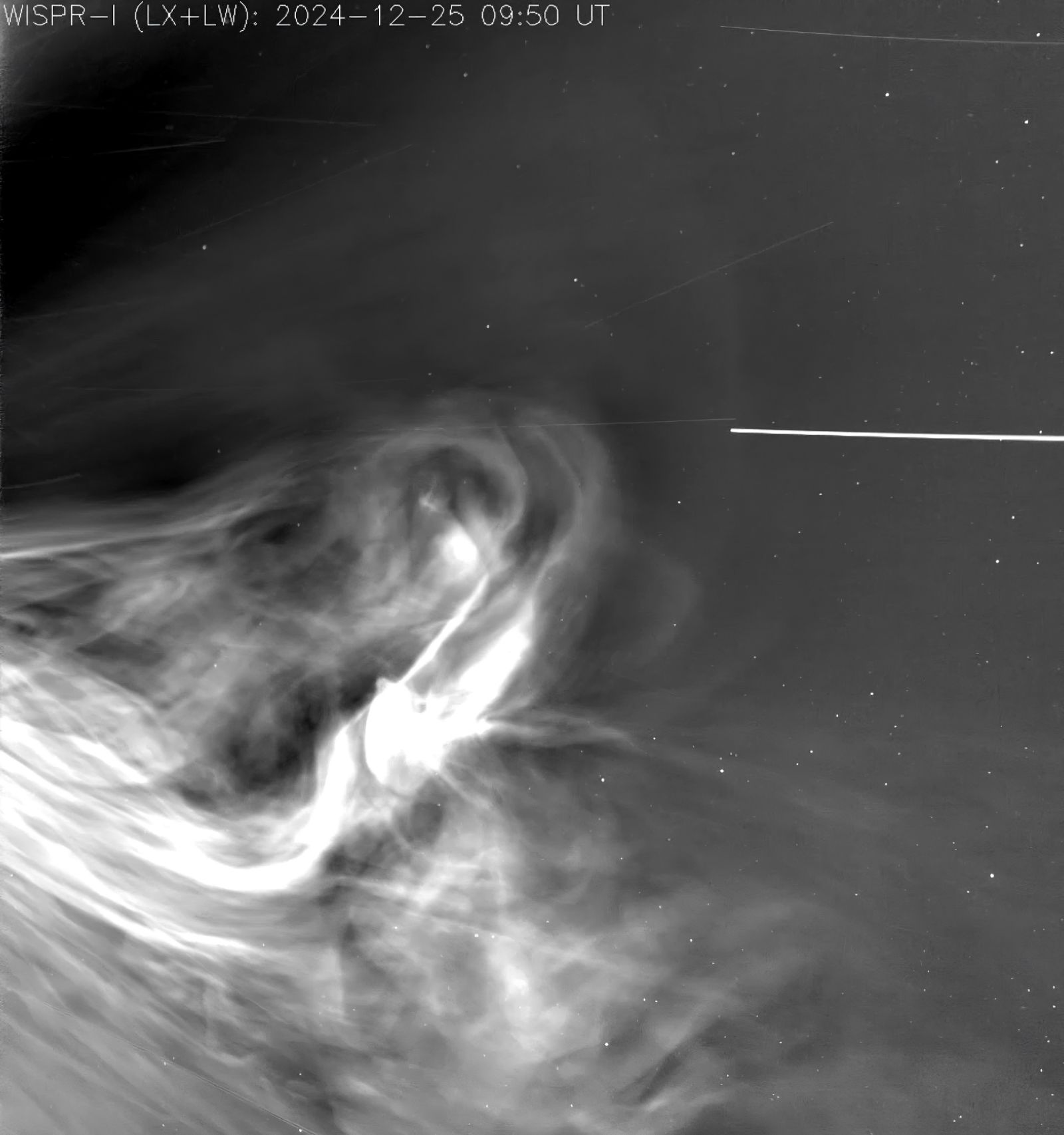Follow us on Google News (click on ☆)
Since its launch in 2018, the Parker Solar Probe mission has been pushing the boundaries of solar exploration. The latest data, collected during a historic flyby in December 2024, offers a dive into the heart of the corona, the Sun's outer atmosphere where space storms form.

This image, created from pictures taken by Parker Solar Probe's WISPR instrument during its record-breaking solar flyby on December 25, 2024, shows the solar wind flowing out from the Sun's outer atmosphere, the corona.
NASA/Johns Hopkins APL/Naval Research Laboratory
Deciphering extreme solar phenomena
Images from the Wide-Field Imager for Solar Probe (WISPR) reveal unexpected details about coronal mass ejections (CMEs). These bubbles of magnetized plasma, when colliding, alter their trajectory and amplify risks to satellites and ground networks.
Analysis of CMEs shows a complex structure, with magnetic fields intertwining. These interactions, never observed with such precision, could improve forecasts of geomagnetic disturbances.
The probe also identified "switchbacks," magnetic zigzags linked to the acceleration of fast solar wind. These structures, more frequent than expected, appear to emerge from active regions on the Sun's surface.
Secrets of the slow solar wind
Unlike fast wind, the slow solar wind, denser and more erratic, remains poorly understood. New measurements confirm the existence of two distinct variants, differentiated by their magnetic signature.
One would originate from coronal "streamers," vast magnetic arches, while the other would come from coronal holes. This discovery helps explain why slow wind affects Earth's magnetosphere differently.
With a next flyby planned for September 2025, Parker might finally pinpoint the sources of these flows. Scientists hope this will resolve a decades-old debate.